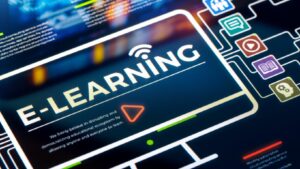In today’s rapidly evolving world, digital solutions for education are transforming how students learn and educators teach. With technology at the forefront, traditional classrooms are embracing innovative tools that enhance learning experiences and foster engagement. From interactive software to virtual classrooms, these digital advancements are breaking down geographical barriers and making education more accessible than ever before.
Digital Solutions for Education

Digital solutions for education greatly impact how students learn and teachers teach. They include learning management systems, which centralize resources and track student progress. Virtual classrooms enable real-time interaction, allowing educators to teach remotely without sacrificing engagement. Interactive software, such as educational games and simulations, appeals to diverse learning styles, promoting active learning.
Artificial intelligence personalizes learning experiences. By adjusting content based on student performance, AI enhances understanding and retention. Online platforms offer accessible resources, ensuring students from various backgrounds can benefit from quality education. Digital solutions for education support collaboration through forums and group projects, fostering peer learning.
Adopting digital tools prepares students for a technology-driven future. By integrating these solutions, educators equip students with essential skills needed in modern workplaces. Emphasizing digital literacy within the curriculum ensures students confidently interact with technology, preparing them for future challenges. Embracing digital solutions for education permanently transforms the academic landscape.
Benefits Of Digital Solutions In Education

Digital solutions for education offer numerous advantages. They provide personalized learning experiences tailored to individual student needs and learning styles. Teachers can leverage these tools to track student progress more efficiently and identify areas needing support.
Enhanced accessibility is another key benefit. Digital platforms enable access to educational resources worldwide, breaking geographical barriers and fostering global collaboration among students and educators. By utilizing digital solutions, language barriers diminish with translation tools, ensuring more inclusive education.
Collaboration is significantly improved with digital solutions for education. Students engage in group projects through virtual classrooms, facilitating teamwork and enhancing communication skills. Platforms support real-time interaction, making learning a dynamic and interactive process.
In addition to these benefits, digital solutions streamline administrative tasks, reducing paperwork and saving time for educators. They foster skill development in areas like digital literacy and problem-solving, crucial in a technology-driven workforce. Thus, digital solutions for education not only enhance learning but also prepare students for future challenges.
Popular Digital Tools In Education

Digital tools revolutionize educational settings by enhancing engagement and accessibility. Learning management systems (LMS) like Canvas and Moodle enable institutions to centralize resources and track student progress efficiently. These platforms facilitate communication between educators and students, providing a structured environment for learning.
Interactive software such as Kahoot! and Nearpod offer engaging methods for students to interact with the material. Through quizzes and interactive lessons, these digital tools enhance retention and understanding. Virtual classrooms, supported by tools like Zoom and Microsoft Teams, break geographical barriers and allow real-time collaboration. These platforms create spaces for discussion, presentations, and group projects, fostering a collaborative learning experience.
Artificial intelligence-powered tools personalize educational content by adapting to student performance. Software like DreamBox and Smart Sparrow utilizes AI algorithms to adjust difficulty levels, ensuring personalized learning paths that cater to individual needs. By integrating these digital tools, educators provide students with modern learning experiences, preparing them for the demands of the digital age.
Challenges And Considerations
While digital solutions offer numerous benefits to education they also present challenges that educators and institutions must address. Ensuring equitable access to technology is crucial to prevent widening the digital divide among students. Additionally educators need ongoing training to effectively integrate these tools into their teaching practices. Cybersecurity and data privacy are also significant concerns that require robust measures to protect student information. Institutions must carefully evaluate the cost of implementing and maintaining digital solutions to ensure sustainability. By addressing these challenges and embracing a thoughtful approach educational institutions can harness the full potential of digital solutions to create an inclusive and effective learning environment for all students.